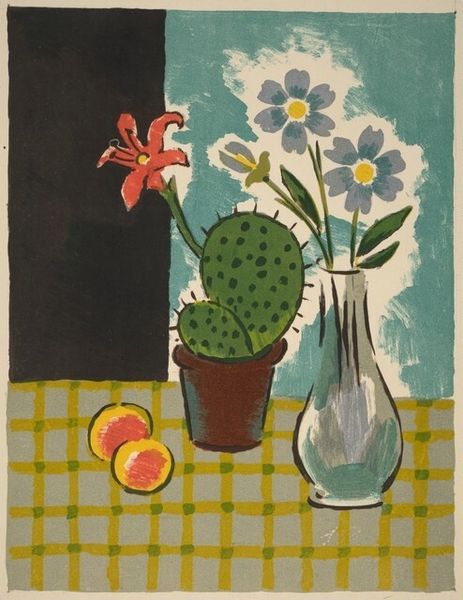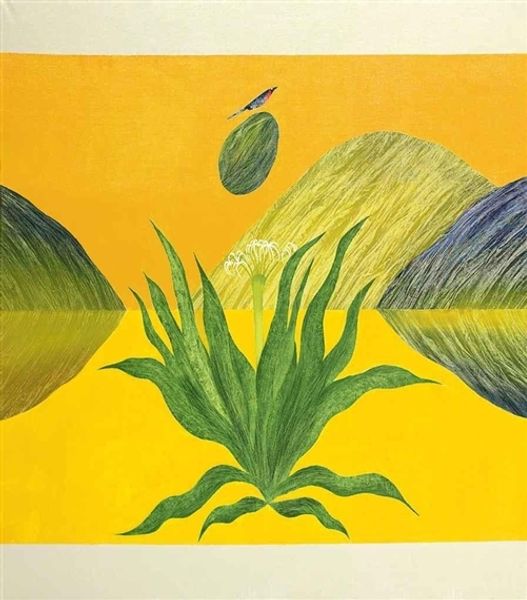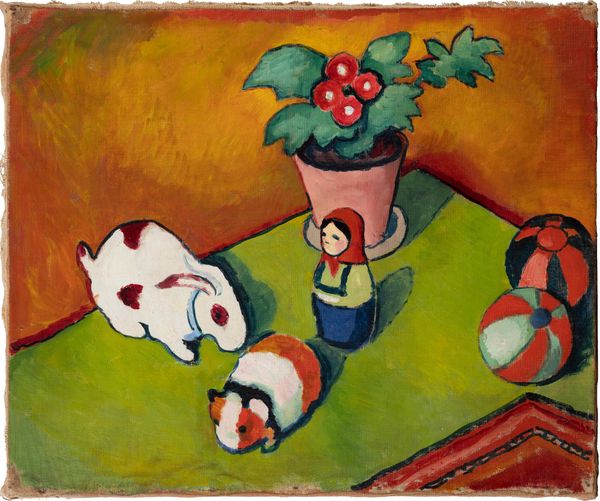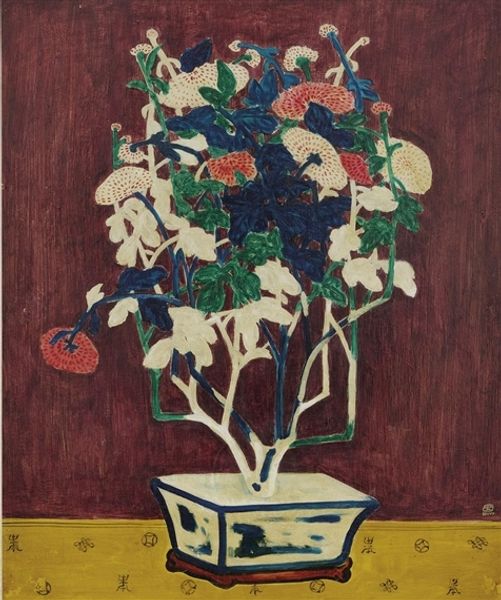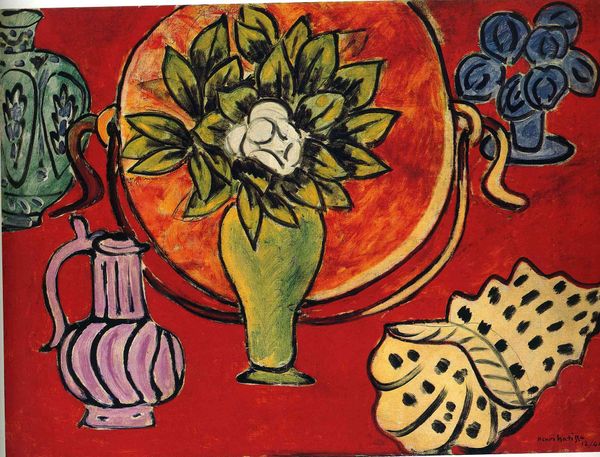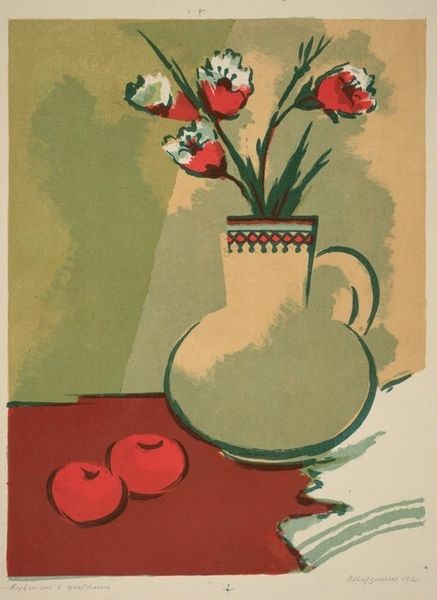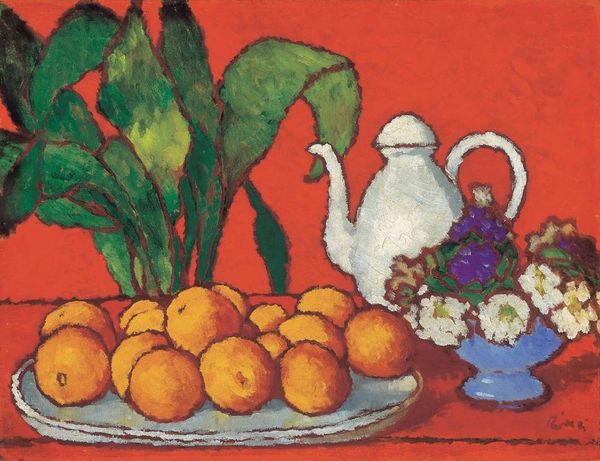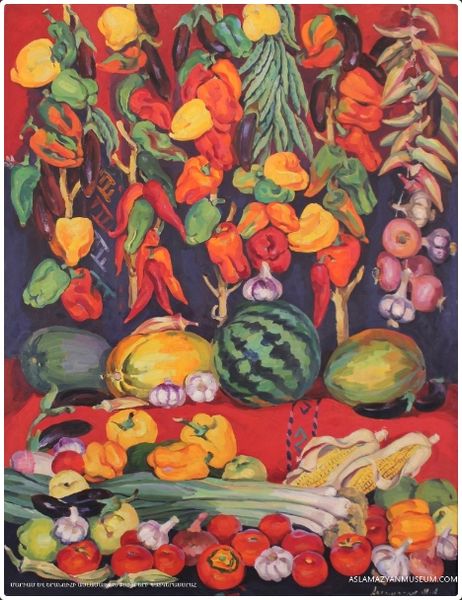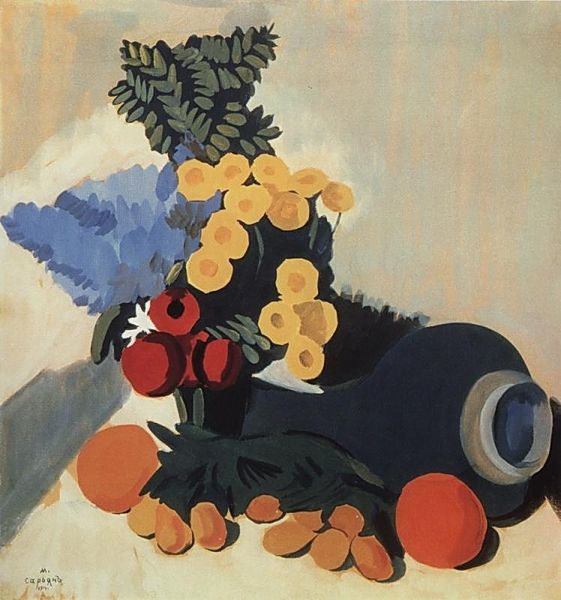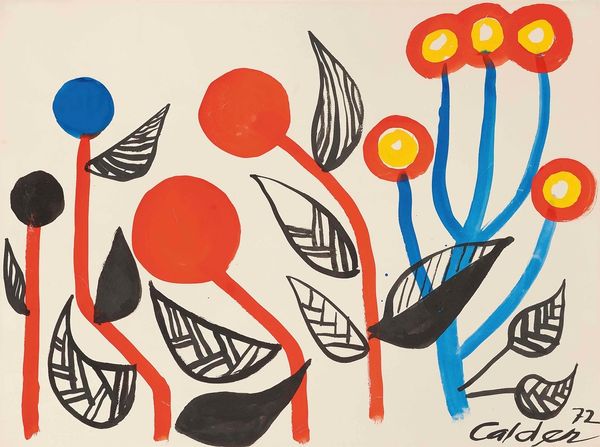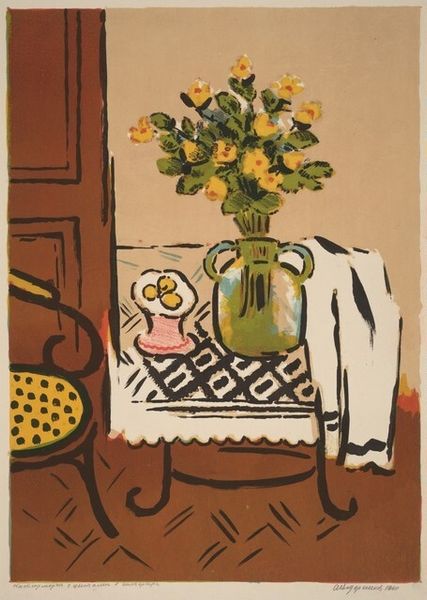
Copyright: Unichi Hiratsuka,Fair Use
Curator: We are looking at "Radish," a woodblock print crafted in 1935 by Unichi Hiratsuka. Editor: What strikes me first is the unexpected boldness. It's a simple still life, but the vibrant, almost garish color choices – the orange background against that brick-red tabletop – really make it pop. Curator: Absolutely, and this boldness isn't just aesthetic. Hiratsuka, though deeply invested in the Ukiyo-e tradition, was a key figure in the Sosaku-hanga movement, which emphasized the artist's control over every stage of printmaking, moving away from the strict divisions of labor in earlier Japanese printmaking. Editor: So this emphasis on the individual craftsman elevates even the humble radish to a worthy subject. Are those leaves block-printed in two shades of green? It's amazing how he suggests depth using just a few distinct planes. Curator: Precisely, the commitment to the artist's vision meant that everyday subjects could become profound statements about the maker's interaction with the world around them. Think about the economic pressures and agrarian struggles of the 1930s. An image of nourishment like this takes on extra significance. Editor: I agree, and the roots themselves are so starkly white against the red surface, it nearly transcends realism. You've got this almost surreal, symbolic quality. It's fascinating how such a grounded, seemingly straightforward image opens into so many readings. Curator: Its enduring appeal surely resides in the combination of formal discipline and unexpected modernity. By positioning "Radish" in both artistic and socio-political circumstances, one realizes just how revolutionary this artwork truly is. Editor: Considering the context you brought up, this unassuming radish is so much more than just a radish now. It stands as a statement. Curator: Exactly! A testament to a philosophy as much as artistic mastery.
Comments
No comments
Be the first to comment and join the conversation on the ultimate creative platform.

